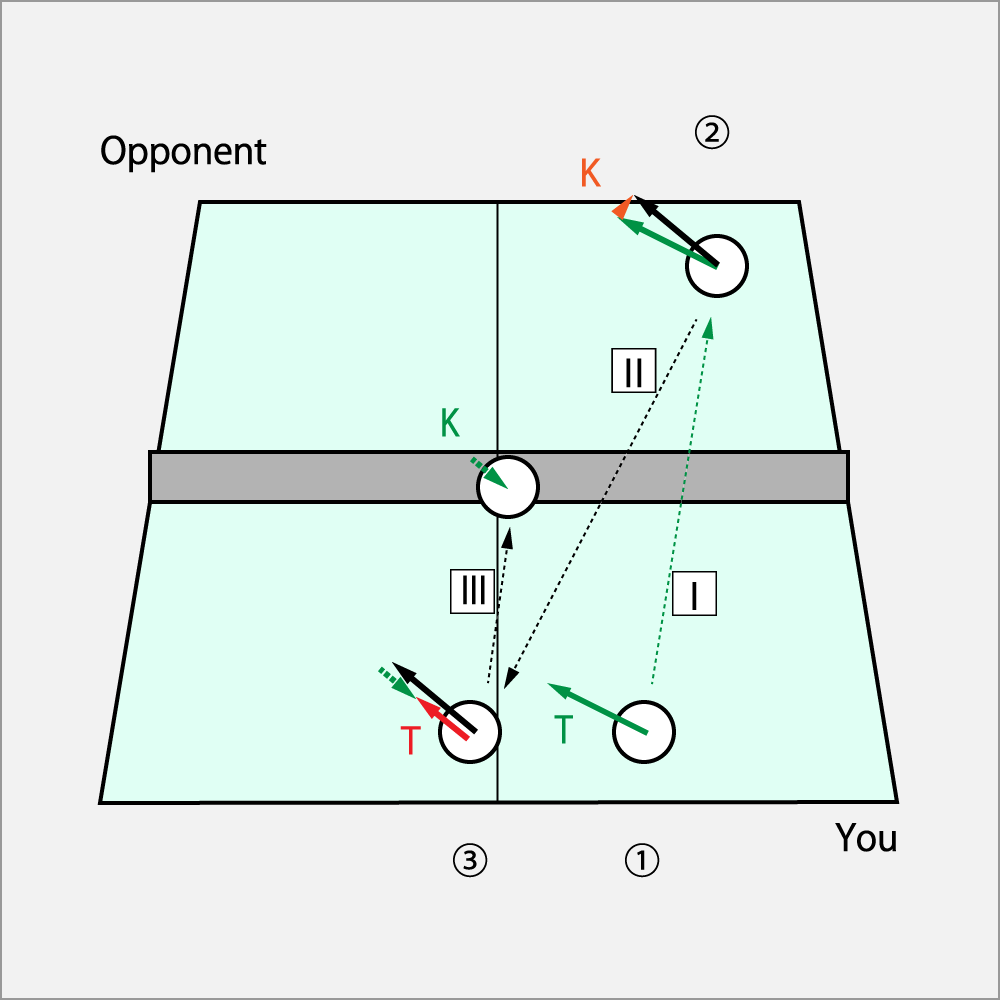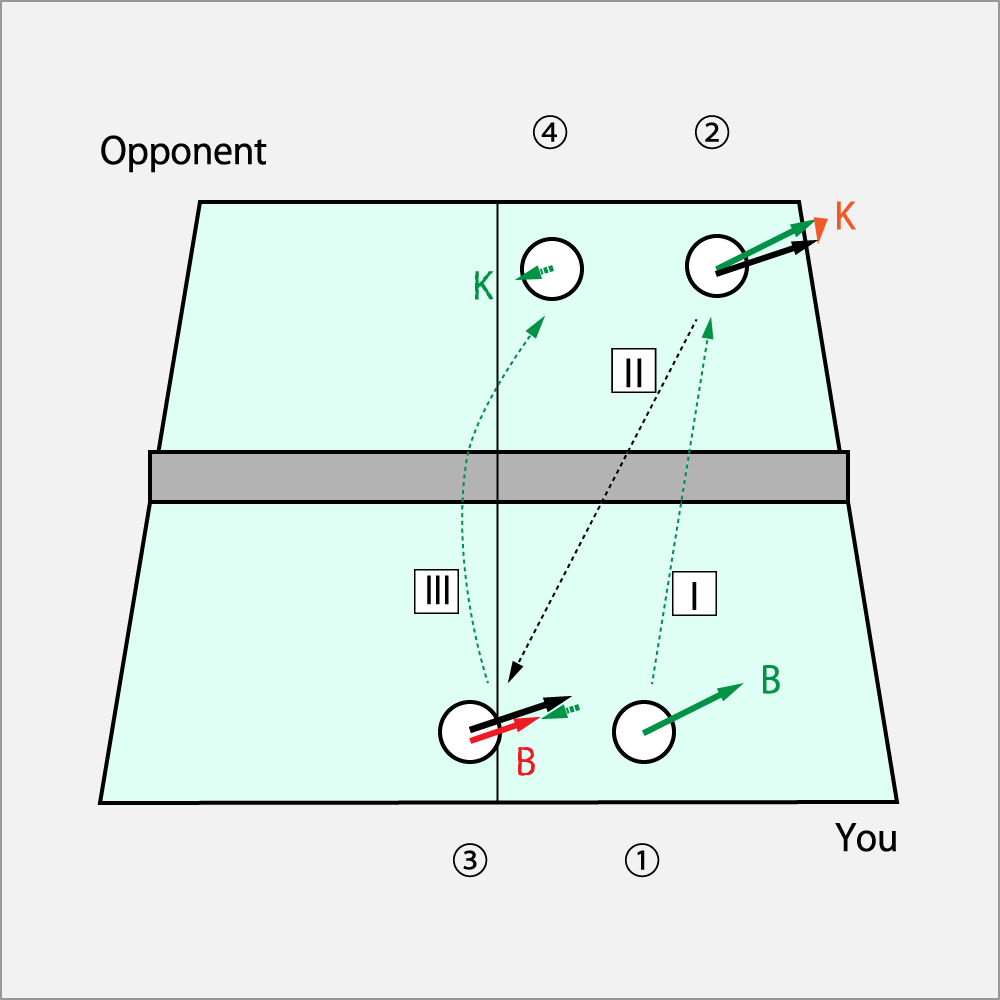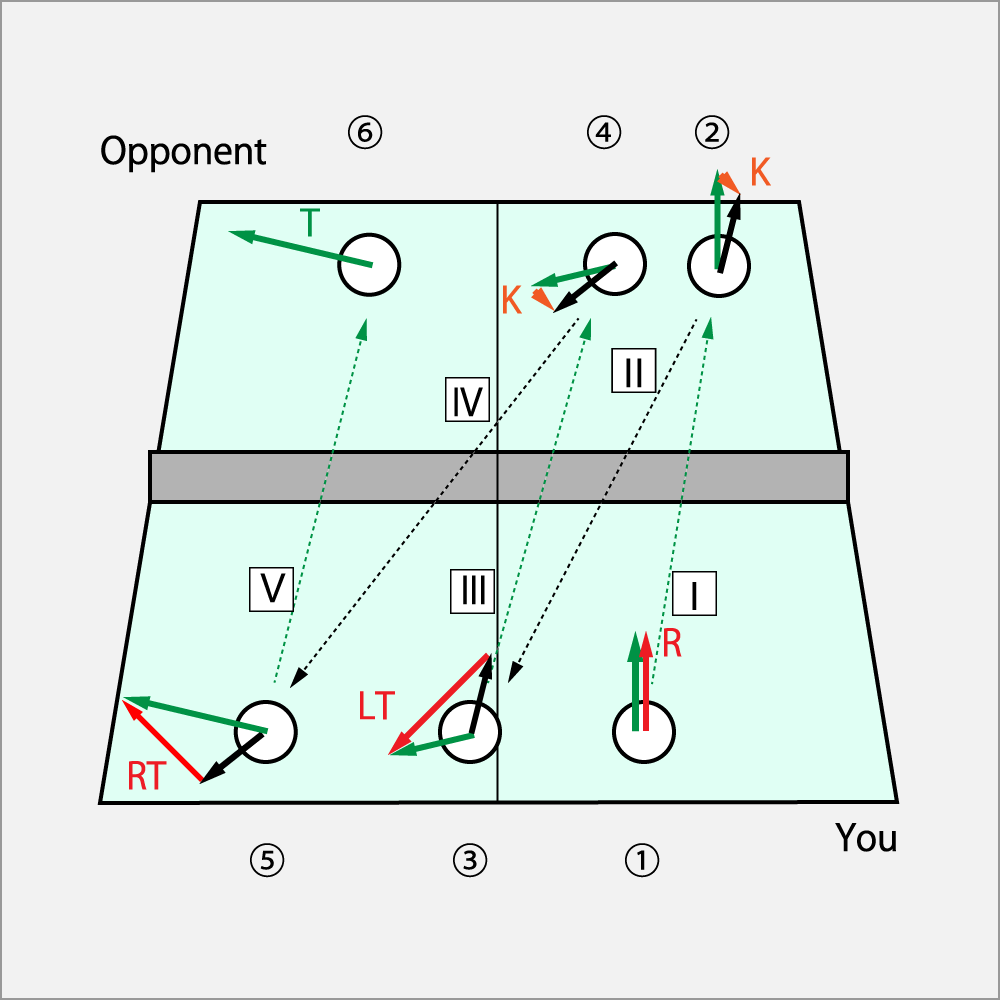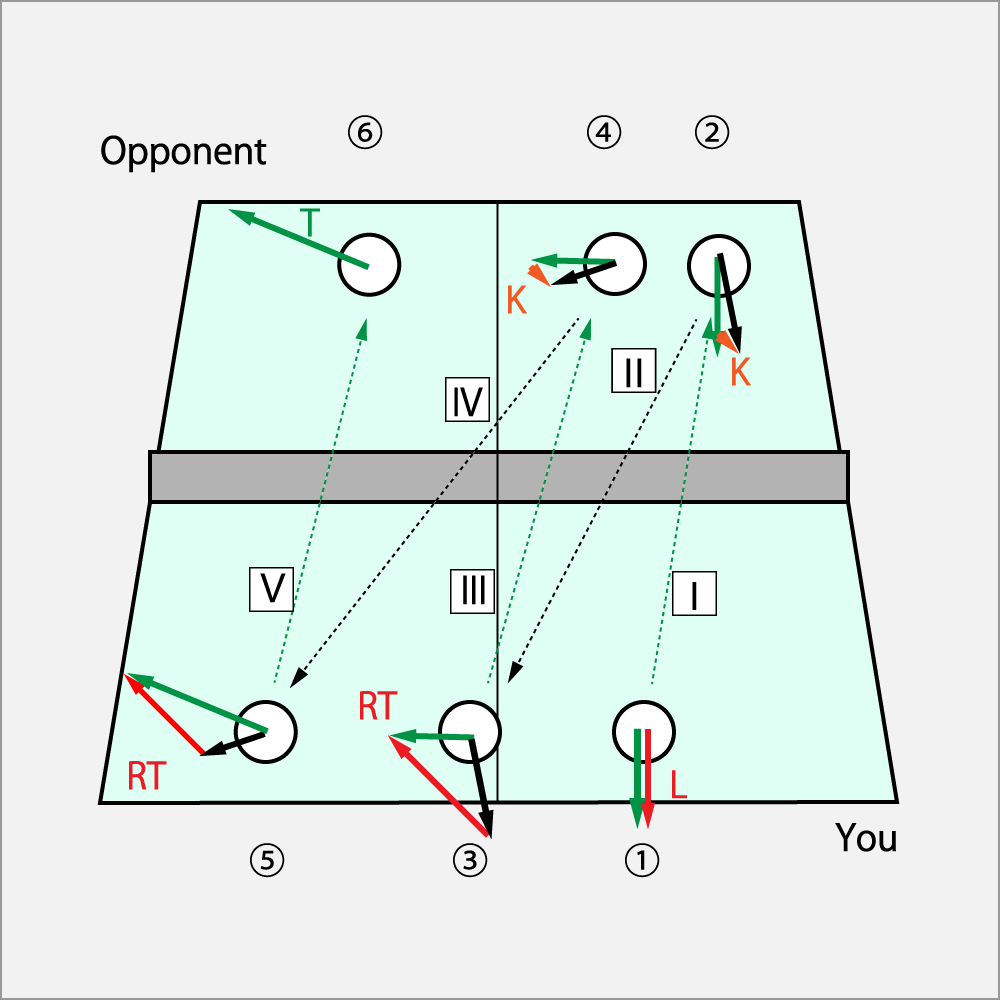Part 5. Tactics against Various Rubberers
5.3. Tactics against Pips-out Rubberers
In this page, at the first, explains the opponent rational tactics which is determined from the rubber properties of the Pips-out of which the opponent's racket is wearing. After that this page describes your reasonable strategy, which is determined from the spin kinds that the opponent rubber fed out. The rubber you are using is assumed the Inverted.
The strategy described here, it will indicate you a new world.
You may not always be able to beat them by using the strategy described here,
but you will be eliminated losing games from the reason you don't know the properties of the rubber.
At least, you will gain an advantage at the level of knowledge.
5.3.1. Opponent's Tactics
- Since the Pips-out is less dependent to your spin, the opponent attacks you with smash.
- For Pips-out, since the speed factor and flying factor also is high, aiming the counter attack by thier block also will be a weapon.
- The ball which was fed out from you will return while keeping its spin.
The Drive of you is translated as Cut, and the net would catch the ball.
The Drive from the Pips-out spin is small and if you didn't know that the spin reaction of your rubber becomes smaller, the ball would easily jump out the table.
(A) When you served with Drive from you to your opponent

① A service with Drive (T) filies on the lineⅠ to the oppoent.
② The opponent of Pips-out rubber receives with a Knuckle (K) by Drive motion, so the ball returns with ΘCut (ΘB) on the Ⅱ.
③ If you had not understand the characteristics of Pips-out exactly, you would misunderstand this, think of the II's spin as a ΘDrive (ΘT) and receive it with the Drive (T) of the block at the racket facing upward. Therefore, the ball receives the reaction force of downward rotation and becomes a Knuckle (K) and is caught in the net on the Ⅲ.
(B) When you served with Cut from you to your opponent

The left figure shows the service on your Cut to the opponent.
① A service with Cut (T) flies on the line Ⅰ to the opponet.
② The opponent of Pips-out rubber receives with a Knuckle (K) by Drive motion, so the ball is returned with ΘDrive (ΘT) on the Ⅱ.
③ If you had not understand the characteristics of Pips-out exactly, you would misunderstand this, think of the II's spin as a ΘCut (ΘB) and receive it with the Cut (B) of the block at the racket facing upward. Therefore, the ball receives the reaction force of upward rotation and becomes a Knuckle (K) and a present ball on the Ⅲ.
5.3.2. Your Tactics
The Pips-out rubber on the fore side absorbs the influence of your spin, so the probability of being counterattacked increases. So, let it block back to the back side and attack 3rd pich to the back side. The fore side attacks only when you can look at the opportunity and win.
(A) 3pitch attack on Curve

① A service with Curve (R) flies on the lineⅠ to the back side of your opponent.
③ The opponent of Pips-out blocks the spin on the lineⅠ with a Knuckle (K) at the point ②, the ball on the Ⅱ has high possibility of table off because the spin is keeping on the spin of Curve (R) on the I. However, if the return enters the court, you can attack with three ball attack of Shoot⋅Drive (LT) to it at the ③.
⑤ When the opponent blocks the attack of Shoot⋅Drive (LT) at the ④, it will come back to you on the Ⅳ, so you add Curve⋅Drive (RT) and attack again with Drive (T) on the Ⅴ.
(B) 3pitch attack on Shoot

① A sercie with Shoot (L) flies on the Ⅰ to the back side of your opponent.
③ The opponent of Pips-out blocks the spin on the line Ⅰ with Knuckle (K) at the point ②, the ball on the Ⅱ has possibility of table off because the spin is keeping on the spin of Shoot (L) on the Ⅰ. However, if the opponent's return enters the court, you can attack with three ball attack of Curve⋅Drive (RT) to it at the ③.
⑤ When the opponent blocks the attack of Shoot⋅Drive (LT) at the ④, it will come back to you on the Ⅳ, so you add Curve⋅Drive (RT) and attack again with Drive (T) on the Ⅴ.